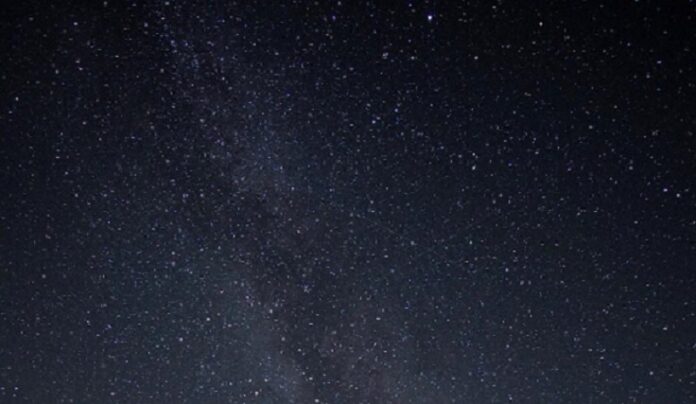Observation of 26 cm radio signals, formed due to hyperfine transition of cosmic hydrogen offer an alternative tool to the study of early 宇宙. As for neutral epoch of the infant 宇宙 when no light was emitted, 26 cm lines are perhaps only window. However, these redshifted radio signals emitted by cosmic hydrogen in the early 宇宙 are extremely feeble and have been elusive so far. In 2018, EDGE experiment reported detection of 26 cm signals but the findings could not be independently confirmed. The main issue was instrument systematic and contamination with the other signals from the sky. The REACH Experiment is to employ unique methodology to overcome the bottleneck. It is hoped that this research group will reliably be able to detect these elusive signals in near future. If successful, REACH Experiment may bring ‘26 cm radio astronomy’ to the forefront in the study of early 宇宙 and help us much in unravelling the mysteries of early 宇宙.
When it comes to the study of 初期の宇宙, name of recently launched ジェイムズウェッブ宇宙望遠鏡(JWST) pops up in our mind. JWST, a successor of hugely successful ハッブル telescope, is a space-based, infrared observatory equipped to capture optical/infrared signals from the early stars and galaxies formed in the 宇宙 soon after the Big Bang1。 しかし、 JWST has some limitation so far as picking up signals from the neutral epoch of 初期の宇宙 心配している。
Table: Epochs in the history of 宇宙 since the Big Bang

(出典: Philosophy of Cosmology – 21 cm の背景。 http://philosophy-of-cosmology.ox.ac.uk/images/21-cm-background.jpg)
Up to 380 k years after the big bang, the 宇宙 was filled with ionised gas and was fully opaque. Between 380k – 400 million years, the 宇宙 had become neutral and transparent. The epoch of reionisation started after this phase starting 400 million after the big bang.
During the neutral epoch of early 宇宙、 宇宙 was filled with neutral gases and was transparent, no optical signal was emitted (hence called dark age). Unionized material does not emit light. This poses a challenge in study of early 宇宙 of neutral epoch. However, microwave radiation of 21 cm wavelength (corresponding to 1420 MHz) emitted by the cold, neutral cosmic hydrogen during this epoch as a result of hyperfine transition (from parallel spin to more stable anti-parallel spin) offers opportunities to researchers. This 21 cm microwave radiation would be redshifted upon reaching Earth and will be observed at 200MHz to 10 MHz frequencies as radio waves2,3.
21cm電波天文学: Observation of 21-centimeter cosmic hydrogen signals offers an alternative approach to the study of early 宇宙 especially of neutral epoch phase that was devoid of any light emission. This can also inform us about new physics such as distribution of matter over time, dark energy, dark matter, neutrino masses, and inflation2.
However, the 21-cm signals emitted by the cosmic hydrogen during early 宇宙 phase is elusive. It is expected to be extremely weak (about one hundred thousand times weaker than other radio signals also emanating from the sky). As a result, this approach is still in infancy.
2018年、研究者は78 MHzの周波数でそのような無線信号を検出したと報告した4. しかし、原始的な 21 cm 電波信号のこの検出は、独立して確認できなかったため、これまでのところ実験の信頼性を確立することはできませんでした。 主な問題は、フォアグラウンド無線信号による汚染のようです。
最新のマイルストーンは、21 年 2022 月 21 日の宇宙水素分析のための無線実験 (REACH) の報告です。REACH は、これらの微弱なとらえどころのない宇宙電波信号を検出するために新しい実験的アプローチを使用し、XNUMX センチメートルの宇宙信号の確認に新たな希望を提供します。
宇宙水素の分析のための電波実験 (REACH) は、天空平均 21 cm の実験です。 これは、データ内の残留系統信号に関連する機器が直面する問題を管理することにより、観測を改善することを目的としています。 ベイジアン統計を使用して、前景および宇宙信号とともに系統を検出し、一緒に説明することに焦点を当てています。 この実験では、7.5 つの異なるアンテナ、超広帯域システム (赤方偏移の範囲は約 28 ~ XNUMX)、およびフィールド内測定に基づく受信機キャリブレータを使用した同時観測が行われます。
This development is significant given its potential to be one of the best tools (and cost effective too vis-a-vis space-based observatories like ジェームスウェッブ) for study of early 宇宙 as well as possibility of ushering in of new fundamental physics.
***
参照:
- Prasad U., 2021.James Webb Space Telescope (JWST): 初期宇宙の研究専用の最初の宇宙天文台。 科学的なヨーロッパ人. 6 年 2021 月 XNUMX 日に投稿されました。 http://scientificeuropean.co.uk/sciences/space/james-webb-space-telescope-jwst-the-first-space-observatory-dedicated-to-the-study-of-early-universe/
- Pritchard JA と Loeb A.、2012 年。21 世紀の 21 cm 宇宙論。 Reports on Progress in Physics 75 086901。 https://iopscience.iop.org/article/10.1088/0034-4885/75/8/086901. arXiv のプレプリントは次の場所で入手可能 https://arxiv.org/abs/1109.6012 PDF版 https://arxiv.org/pdf/1109.6012.pdf
- オックスフォード大学。 宇宙論の哲学 – 21 cm の背景。 で入手可能 http://philosophy-of-cosmology.ox.ac.uk/21cm-background.html
- Bowman、J.、Rogers、A.、Monsalve、R.ら。 空平均スペクトルの 78 メガヘルツを中心とした吸収プロファイル。 ネイチャー 555, 67–70 (2018). https://doi.org/10.1038/nature25792
- de Lera Acedo, E., de Villiers, DIL, Razavi-Ghods, N. et al. 赤方偏移 z ≈ 21–7.5 からの 28 cm 水素信号を検出するための REACH 放射計。 ナット・アストロン (2022)。 https://doi.org/10.1038/s41550-022-01709-9
- エロイ デ レラ アセド 2022. REACH 放射計で幼児宇宙の謎を解き明かす。 オンラインで入手可能 https://astronomycommunity.nature.com/posts/u
***






































